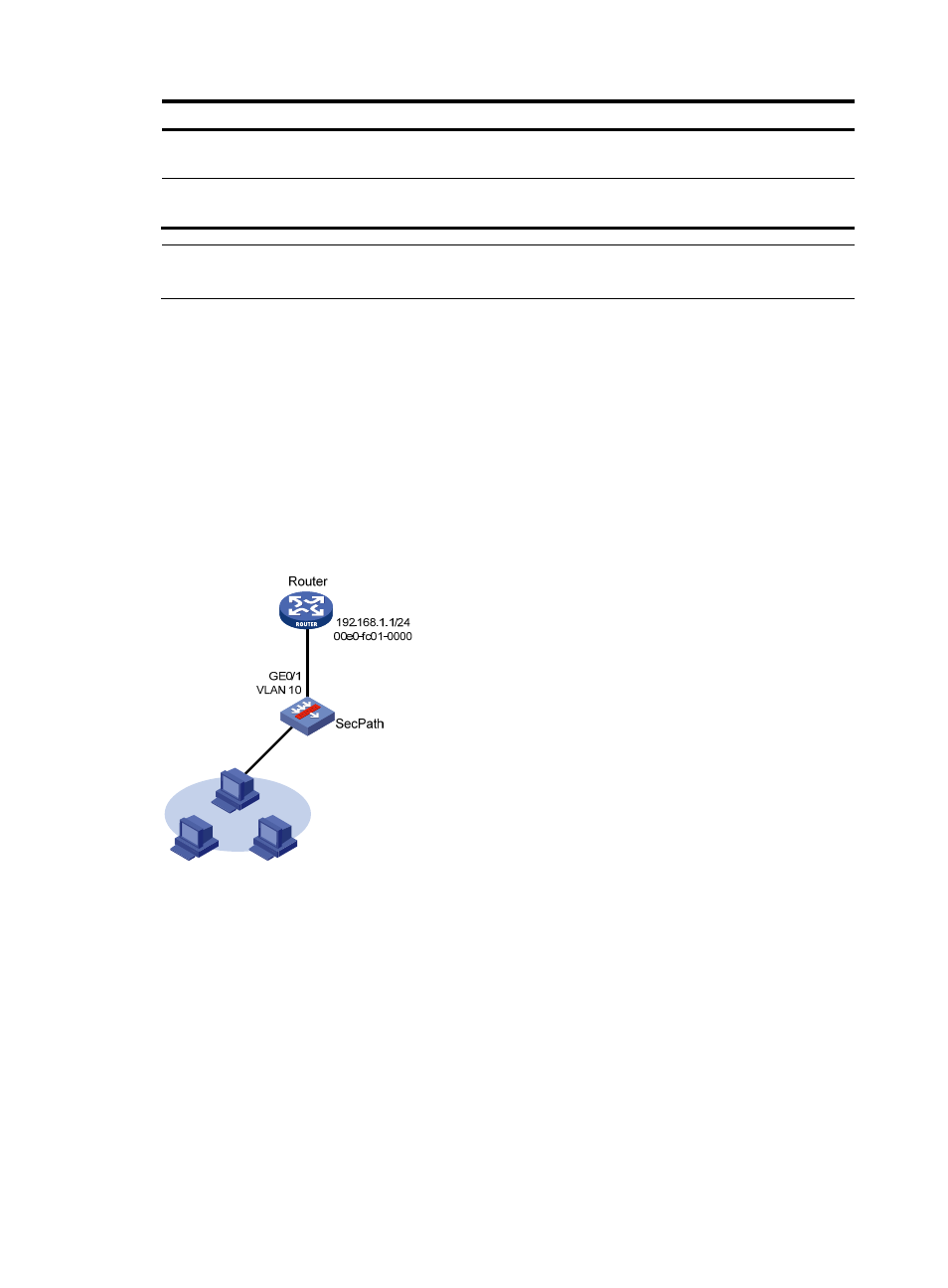Static arp entry configuration example, Network requirements, Configuring the secpath – H3C Technologies H3C SecPath F1000-E User Manual
Page 277

252
Task Command
Remarks
Display the aging timer for
dynamic ARP entries.
display arp timer aging [ | { begin | exclude
| include } regular-expression ]
Available in any view
Clear ARP entries from the ARP
table.
reset arp { all | dynamic | static | interface
interface-type interface-number }
Available in user view
NOTE:
Clearing ARP entries from the ARP table may cause communication failures.
Static ARP entry configuration example
Network requirements
As shown in
, hosts are connected to the SecPath, which is connected to the router through
interface GigabitEthernet 0/1 in VLAN 10. The IP and MAC addresses of the router are 192.168.1.1/24
and 00e0-fc01-0000 respectively.
To prevent malicious users from attacking the SecPath and enhance security for communications between
the router and the SecPath, configure a static ARP entry for the router on the SecPath.
Figure 161 Network diagram
Configuring the SecPath
# Create VLAN 10.
<SecPath> system-view
[SecPath] vlan 10
[SecPath-vlan10] quit
# Add interface GigabitEthernet 0/1 to VLAN 10.
[SecPath] interface GigabitEthernet 0/1
[SecPath-GigabitEthernet0/1] port link-type trunk
[SecPath-GigabitEthernet0/1] port trunk permit vlan 10
[SecPath-GigabitEthernet0/1] quit
# Create interface VLAN-interface 10 and configure its IP address.
[SecPath] interface vlan-interface 10